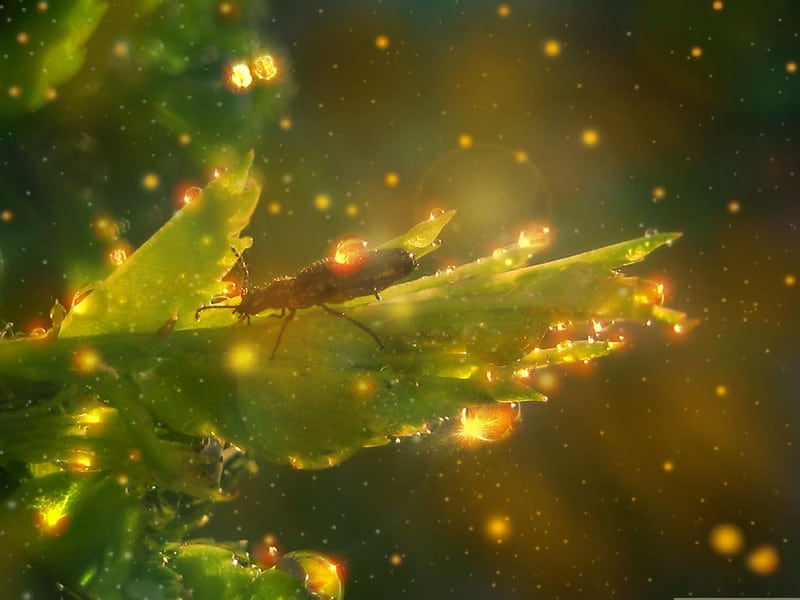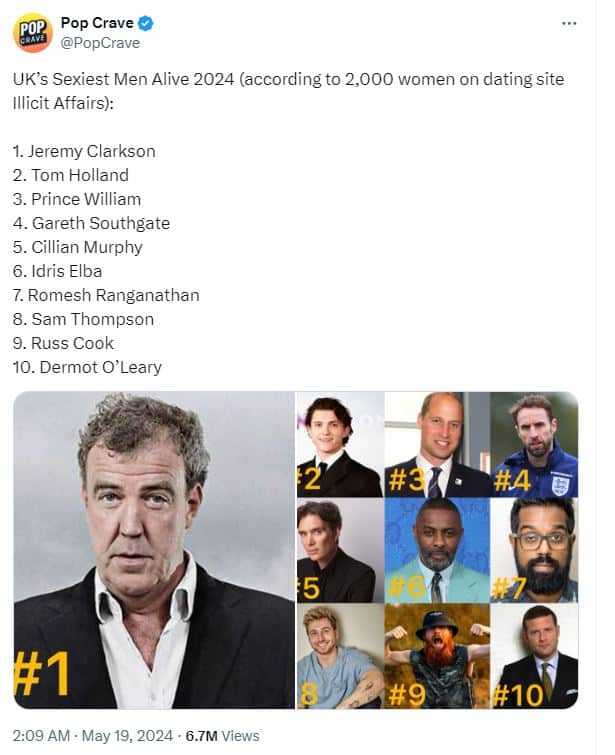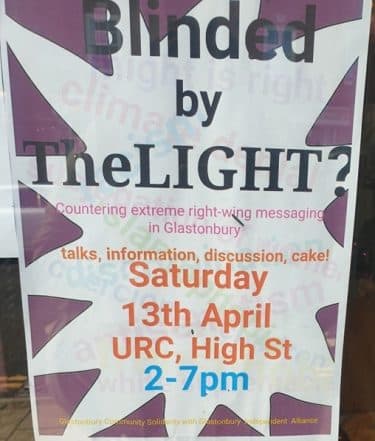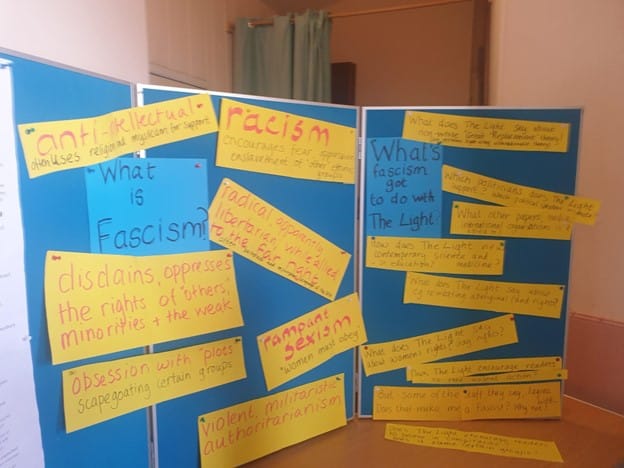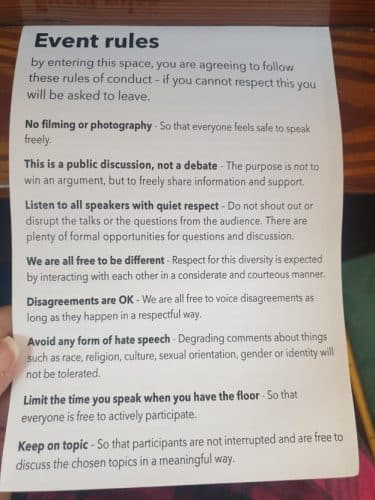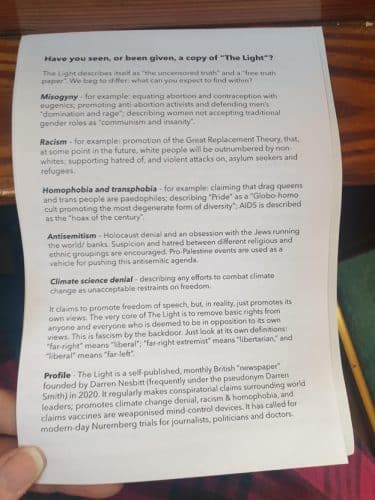The time on the clock read a quarter past three. The house was silent, my room dark, save for the dim light of my phone screen as I lay in bed, mindlessly scrolling through TikTok. My eyes threatened to close as my thumb subconsciously swiped to the next video. A synchronised chant rang out from my phone. My brain was half asleep, though the first thought I had was that this was some cult performing a satanic ritual or something. But as the chants became clearer, my sleepy mind started to make out what they were actually saying:
“Park Jimin! Kim Taehyung! Jeon Jungkook! BTS!”
This was no cult. This wasn’t anything with even the slightest religious implications behind it. It was just a group of BTS fans performing a fan chant. In other words, just another day in the life of a K-Pop fan. My brain yelled at me to go to sleep. I did have an 8am class the next day. But part of it started to wander off, thinking about just how similarly cult members and fans of celebrities can act.
Many of us would like to think that we’re too smart to be indoctrinated into a cult. Internet users proudly declare that they cannot understand why so many people did the bidding of infamous cult leaders like Charles Manson and Jim Jones without question, only to then log on to Twitter and worship Jimin in the next breath.
While it would certainly be preposterous to claim that celebrities are evil cult leaders and fans their loyal followers blinded by lies, there is still merit in examining how online “stan” culture can mimic the behaviour of cults. In a world where the line between worshipping a so-called “prophet” and fawning over the latest pop icon is getting increasingly blurry, it may be hard to tell whether we’re sipping on some exquisite champagne or simply just drinking the Kool-Aid.
Lights, Camera, Indoctrination!
Before we compare cults with the fan culture surrounding celebrities, let us first understand the nature of cults. They utilise many tactics, such as love-bombing, information control and isolation, to manipulate people into joining them. After which, cults then play into human emotions like fear and guilt to keep their victims trapped (Verity, 2023).
Love-bombing: Cult recruiters will often shower their victims with admiration and affection, essentially “bombing” them with love, to make them think that the cult is a loving family where they will be able to feel a sense of belonging in. Many of the victims these recruiters choose to target are also those who feel unloved and abandoned by the world, making them even more susceptible to the manipulations of these recruiters.
Information control and isolation: Cults will also segregate themselves and their followers from the outside world, effectively cutting off all external influences from the lives of their followers. Members are thus only subjected to whatever information (or lies) that the leaders and higher-ups of the cult want them to believe.
Fear and guilt: Getting people through the grand doors of a cult is just the first step; what’s important is making them stay. Hence why cults and their leaders appeal to human emotions by threatening members with exile or telling them they’re going to some version of Hell should they choose to leave, thus preventing members from potentially defecting.
Putting the ‘Cult’ in Stan Culture
The modern fan culture that exists on social media is frequently referred to as cult-like by those unfamiliar with it and, sometimes, even those who take part in it. But what exactly makes these fans behave like zealots of a cult, and is Jimin from BTS really a cult leader? The answer to the latter is probably a “no” but the first may not be so easy to answer.
As humans, we actively seek a sense of belonging in group settings, be it physical or virtual. We want – we need – to fit in. The desire to belong is just human nature (Allen, 2022). Cults play into this mindset, they practise love-bombing on potential recruits to instil in them a sense of belonging. When they feel valued and appreciated, victims are more likely to fall right into the hands of indoctrination.
Similarly, this sense of belonging is what drives many people into joining fandoms (Zubernis, 2021). We crave the feeling that there is a group of people, or at least someone, out there who understands our likes and obsessions. Having someone we can talk to for hours on end about the new Ariana Grande music video or the new Marvel movie is comforting; it makes us feel seen and heard. This is the exact reason why many fans will actively seek out other fans in real life or online fan communities in search of this sense of solidarity and to feel included in something.
Another commonly used tactic by cults – information control – is also reflected in a phenomenon formed by social media algorithms: the echo chamber. Echo chambers are basically bubbles within an individual’s social media feed where whatever we see will only affirm what we already believe in, virtually isolating us from opposing views (Dhulipala, 2023). These chambers are formed by complex algorithms present in just about every corner of the internet, working relentlessly to personalise our endless scrolling experience and cater to our interests, in order to keep us online and to keep the revenue pouring in.
To understand more about echo chambers and how they affect our daily internet interactions, I sat down for an interview with Prisha, a long-time fan of South Korean boy group Seventeen, who is active on multiple social media platforms, mainly TikTok and Twitter. She told me that the posts she sees about Seventeen were “majority positive” and that she “[doesn’t] see many negative posts”.
When further prompted about the differences in how she perceives positive and negative posts about Seventeen, Prisha revealed to me that she has a “tendency to agree with the good news”. She recalled instances where she would see posts about how a member donated large amounts of money to institutions like charities or animal shelters and would “instantly believe [the post] and wouldn’t bother to fact check”. I asked Prisha about her reasons for doing so.
“I think it’s because I have personal biases towards [Seventeen]. I watch a lot of shows of them and from their on-screen personality, I believe that they would be the type to donate money to animals or charity.”
In stark contrast, Prisha said that if she saw more negative news about the groups that she is a fan of, she wouldn’t be so ready to believe it. “I was really skeptical about the news that Seunghan from RIIZE (another group that she is a fan of) was kicked out for smoking and only believed it when I saw actual news outlets posting pictures of him smoking and not just the posts circulating around Instagram and TikTok.”
This interview revealed a lot to me about how drastically different our perception of news surrounding our favourite idols might be, all because of our inherent predisposition towards them. Indeed, as I recalled my own encounters with posts about my own idols, I realised that I don’t see as many negative posts about them as I do posts from other fans defending them against these allegations. Similar sentiments are echoed throughout the rest of the online space as well. Just look at Taylor Swift. One tweet about her carbon emissions can garner countless quote tweets from Swifties coming to her defence.
Lastly, while there isn’t a direct comparison to the fear tactics and guilt-tripping that cults employ to basically keep their members imprisoned, internet users find their way. In today’s digital age, simply logging off your account and cutting off your internet interactions is not enough to protect yourself. Some fans will even doxx their fellow social media users simply for having a different opinion.
Most commonly used by fans in retaliation to the haters, doxxing is the act of exposing private information about someone on the internet and social media in order to attack and ridicule them (Reporters Committee, n.d.). Extremely dangerous, doxxing and online harassment can go so far as users receiving death threats in the mail. As a result, many people oftentimes refrain from speaking up online about celebrities, more specifically the really popular ones, in fear of being doxxed.
With all this laid out, it is not hard then to see how the behaviours of netizens can mimic that of a cult’s supporters.
A One-Way-Street to Celebrities
Remember earlier when I said that Jimin from BTS is probably not a cult leader? Well, the answer to that may not be as straightforward as it seems. It is impossible to talk about the toxic nature of celebrity and fandom culture on the internet without talking about the parasocial relationships that fans form with their favourite celebrities.
The dynamics of a parasocial relationship are intrinsically skewed (Goodman, 2023). One party – the fan – invests a considerable amount of their time and effort, while the celebrity is often unaware that the other party even exists. Formation of such relationships can have harmful implications: it builds a cult of personality around the celebrity where fans will revering them regardless of anything that they do.
Social media plays a big part in the construction of parasocial relationships (Langlois, 2023). With internet access, many of us now have practically unlimited access to our idols all around the clock. When we see our favourite celebrities post life updates or share personal insights on social media, it can start to feel like we actually know them, fostering a feeling of genuine connection.
Celebrities aren’t completely innocent either; many of them actively play into this unhealthy dynamic. K-Pop idols are especially notorious for this. Many groups hold fan-calls and even fan-meetings. Fans get to interact with their idols on a personal basis at these events, contributing to the development of an asymmetrical relationship where, to the fans, this is a special once-in-a-lifetime experience. To the idols, it’s just part of the job.
Many online interactions between K-Pop fans and idols also heavily toe the line of appropriateness. Some idols may even act as if they’re in a relationship with their fans, leading fans to spiral into delusions. The line between reality and the virtual world starts to blur, setting the groundwork for parasocial relationships to form.
Fans can will start to believe that their favourite celebrities can do no wrong; they start to blindly believe in anything that these celebrities say. This type of behaviour is incredibly reminiscent of how cult followers act and showcase just how extreme the cult-like behaviour of fandoms can get, only being exacerbated by social media.
In Defence of Fans and Stans
Many fans, however, argue that, as long as they’re not harming anyone, there’s no real problem. They claim that they’re just having fun and expressing their love and admiration for their favourite celebrities, just like one would with any of their interests or hobbies. I previously discussed how the need to belong stems from pure human instinct. If these fans are merely acting on such human instincts, being a part of a fandom shouldn’t be misconstrued as a negative thing.
Being a part of a fandom brings many fans a form of online escapism. It can offer a sense of comfort to see bits of ourselves in our idols and other fans. It’s always nice to know that we’re seen and that we’re not alone.
We often see feel-good stories on the internet from hardcore fans who claim that a certain song or musician saved their lives during times of darkness. We can’t help but feel touched when we see people getting emotional when meeting their heroes. And how many of us have also felt a chill run down our spines upon hearing the first note play at the concert of our favourite singer or band. It is undeniable that being a part of a celebrity fandom has many psychological benefits to our mental health.
But is that truly champagne in a glass or merely a jug of Kool-Aid? The cult-like etiquette of online fan communities can clearly be toxic and harmful, and there are also larger implications. By glorifying their idols and putting them on a pedestal, fans will believe in any rhetoric spewed out of these celebrities’ mouths, be it true or false.
In 2015, reality star Kim Kardashian was issued a warning from the U.S. Food and Drug Administration (FDA) for promoting a certain drug – Diclegis – without including the essential risk information (Guzman, 2015). Just last October, Justin Bieber posted an Instagram story “praying for Israel” for all of his nearly 300 million followers to see. In the background, a picture of razed Gaza (Murray, 2023). The list doesn’t end here either; countless other celebrities have been embroiled in drama for spreading misinformation.
Fans who see these posts are unlikely to question the legitimacy of them as they, wrongfully, believe that what their favourite celebrities saying must be true. They fail to recognise the need to fact check due to their prejudices that their idols have good moral standings. This has been pointed out by the actions of netizens, by Prisha during our chat, and even by my own thoughts scrolling through my seemingly never-ending social media feed.
The Need to Cult-ivate Critical Thinking
Most of us are likely not a part of a cult. But, looking at the current state of internet fandom culture, many of us might as well be.
Navigating the online world is now more precarious than ever before. Fake news and misinformation run rampant, penetrating every crack and crevice of the internet. The rise of tools such as generative artificial intelligence (AI) – which can even now generate relatively convincing videos – only serves to worsen the problem into an even more chasmic stage of degeneration. The celebrities and idols that we worship aren’t helping either, especially not when their fans trust and accept anything that they say with not even a single ounce of doubt. But it is not impossible.
In today’s complex and labyrinthine digital landscape, critical thinking has never been more critical. It is imperative that we always question everything that we see on the internet. It doesn’t matter if who is behind the account is a nameless, faceless internet user or the Queen Bey, Beyoncé, herself. It doesn’t even matter if it comes from a reputable news source. What matters is that we take matters into our own hands to seek out the truth instead of accepting anything we see on the internet.
References
- Allen, K.-A. (2022, February 3). The science behind our need to belong. Psychology Today.
- The dangers of Doxxing. The Reporters Committee for Freedom of the Press. (n.d.).
- Dhulipala, S. (2023, September 27). The Echo Chamber Effect: How Algorithms Shape Our Worldview: Opinions. Campaign Asia.
- Goodman, L. D. (2023, September 6). What are parasocial relationships-and are they healthy? Forbes.
- Guzman, Z. (2015, August 12). FDA warns Kim Kardashian about Instagram drug endorsement. NBCNews.com.
- Langlois, S. (2023, December 4). The dangerous side of Parasocial relationships. Creek HiLife.
- Murray, T. (2023, October 11). Justin Bieber criticised for pro-Israel post featuring image of Gaza ruins. The Independent.
- Verity, N. (2023, April 25). The psychology of cults and cult leaders: Unraveling the complexities of manipulation and control. Medium.
- Zubernis, L. (2021, March 27). Is fandom a cult? Psychology Today.





